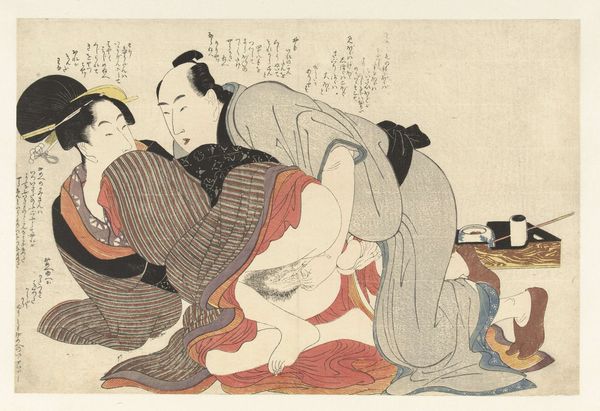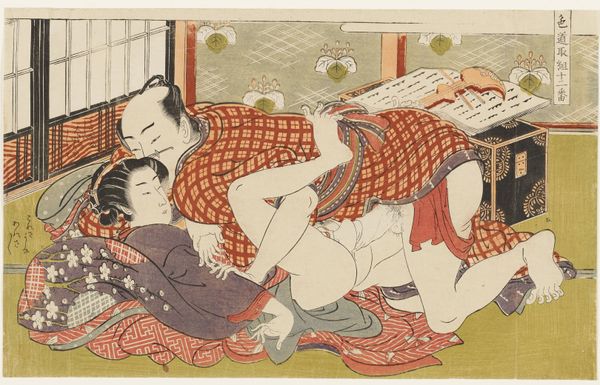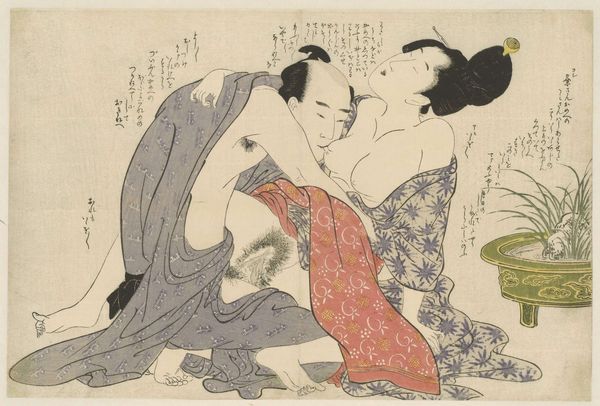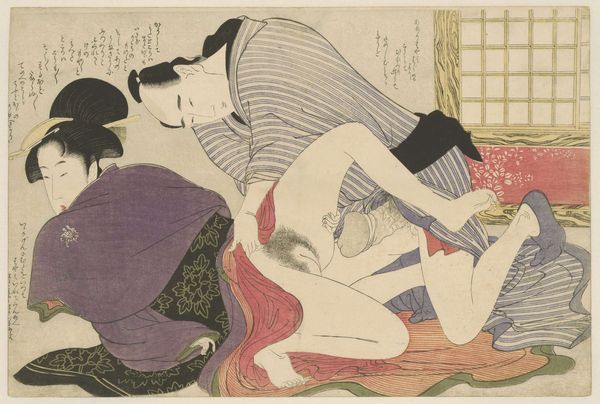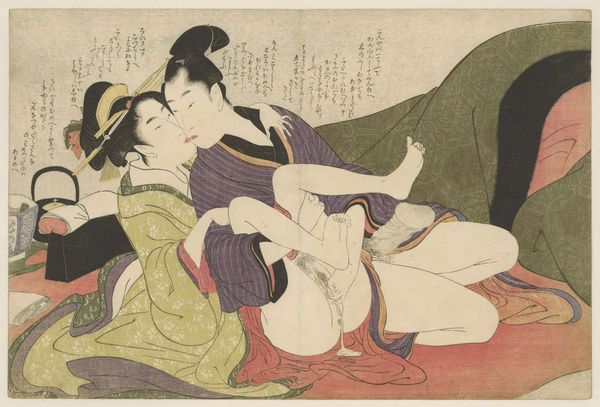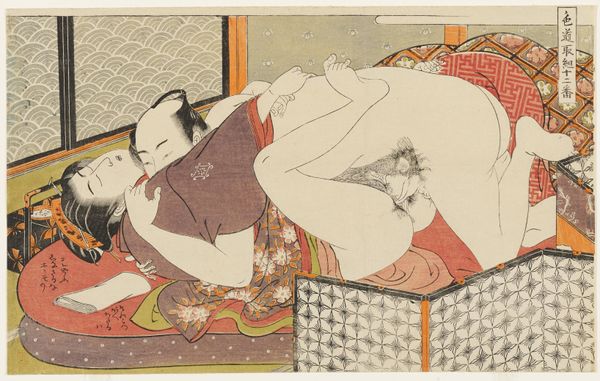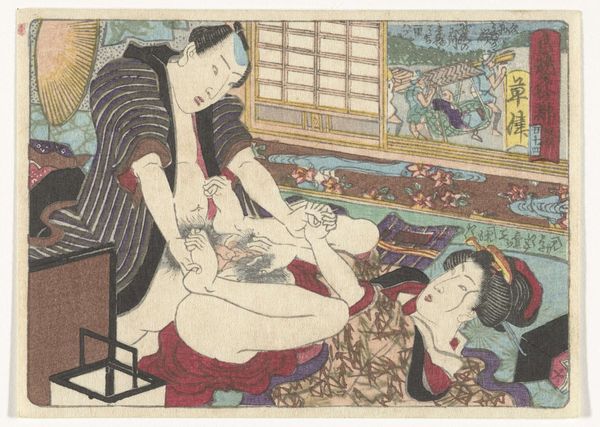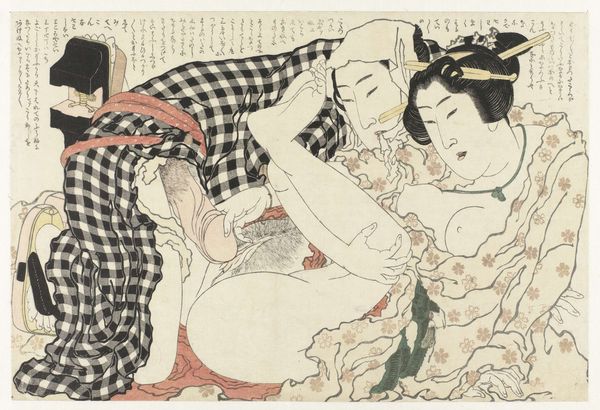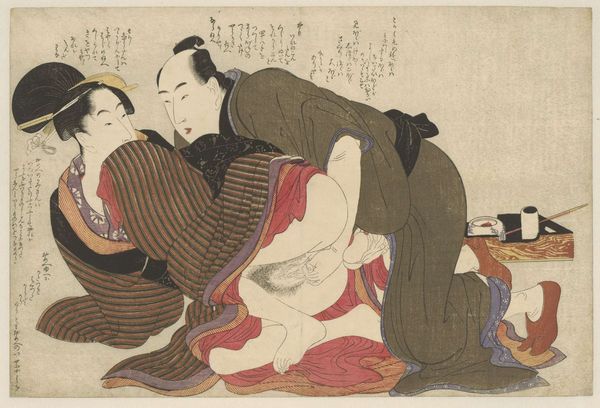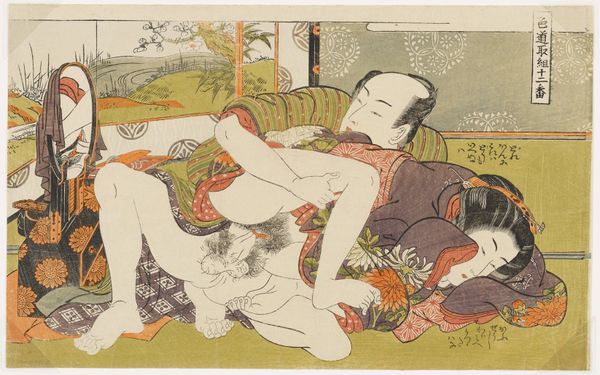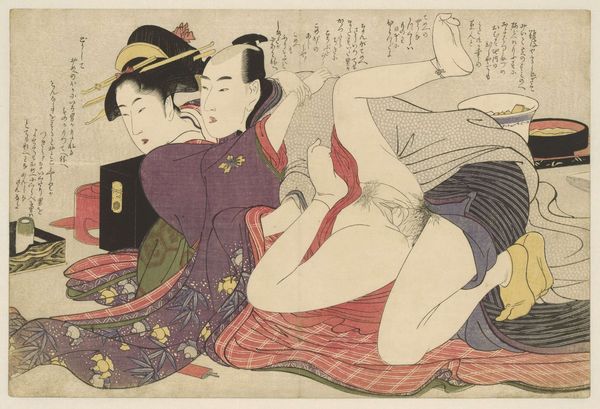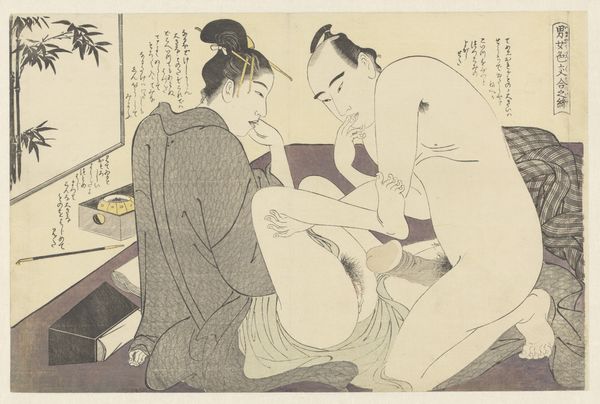
print, woodblock-print
# print
#
asian-art
#
ukiyo-e
#
woodblock-print
#
nude
#
erotic-art
Dimensions: height 265 mm, width 394 mm
Copyright: Rijks Museum: Open Domain
Curator: Welcome. We’re looking at "Liefdeskoppel bij naaidoos," or "Love Couple by a Sewing Box," a work by Katsushika Hokusai created around 1812-1814. It's a woodblock print in the ukiyo-e tradition, housed here at the Rijksmuseum. Editor: It’s immediately striking. There’s a sense of... resignation almost, mixed with eroticism. The man’s pose is more draped than forceful. Is that commentary on societal power structures within these encounters? Curator: Ukiyo-e, or “pictures of the floating world,” often depicted intimate moments, but there's also a complex symbolism at play. Look at the placement of the sewing box: it's a container for creation, nestled beside a scene of pleasure and potentially, procreation. Editor: Right, the “floating world” isn’t just about escapism; it reflects deeper currents of pleasure, but also duty and expectations within Japanese society. The closed eyes, their passive expressions - does it suggest societal constraints placed upon women, even within private moments? Curator: Possibly. Or maybe the focus is simply on the shared experience. These prints often served as teaching aids or marital guides, not just depictions of lust. And then there's the text within the print itself—lines from popular poems that set the mood, or perhaps offer cultural context to the erotic imagery. Editor: And we must confront the erotic imagery, since its presence can’t be separated from questions about the male gaze and female agency. Are they acting, performing in this private scene for each other...or for a possible implied viewer? The setting offers an environment that seems very intimate, yet this image, a visual artifact of an extremely private encounter, can today circulate to potentially vast audiences. It asks an important ethical question for the consumer of the image. Curator: Ultimately, as an image produced within a unique culture and tradition, its layers of meaning are still relevant and open to a dialogue with current interpretations. Editor: Precisely. I see this not merely as a historical document of a bygone time, but also as an engagement with enduring questions about desire, control, and the enduring gaze.
Comments
No comments
Be the first to comment and join the conversation on the ultimate creative platform.
